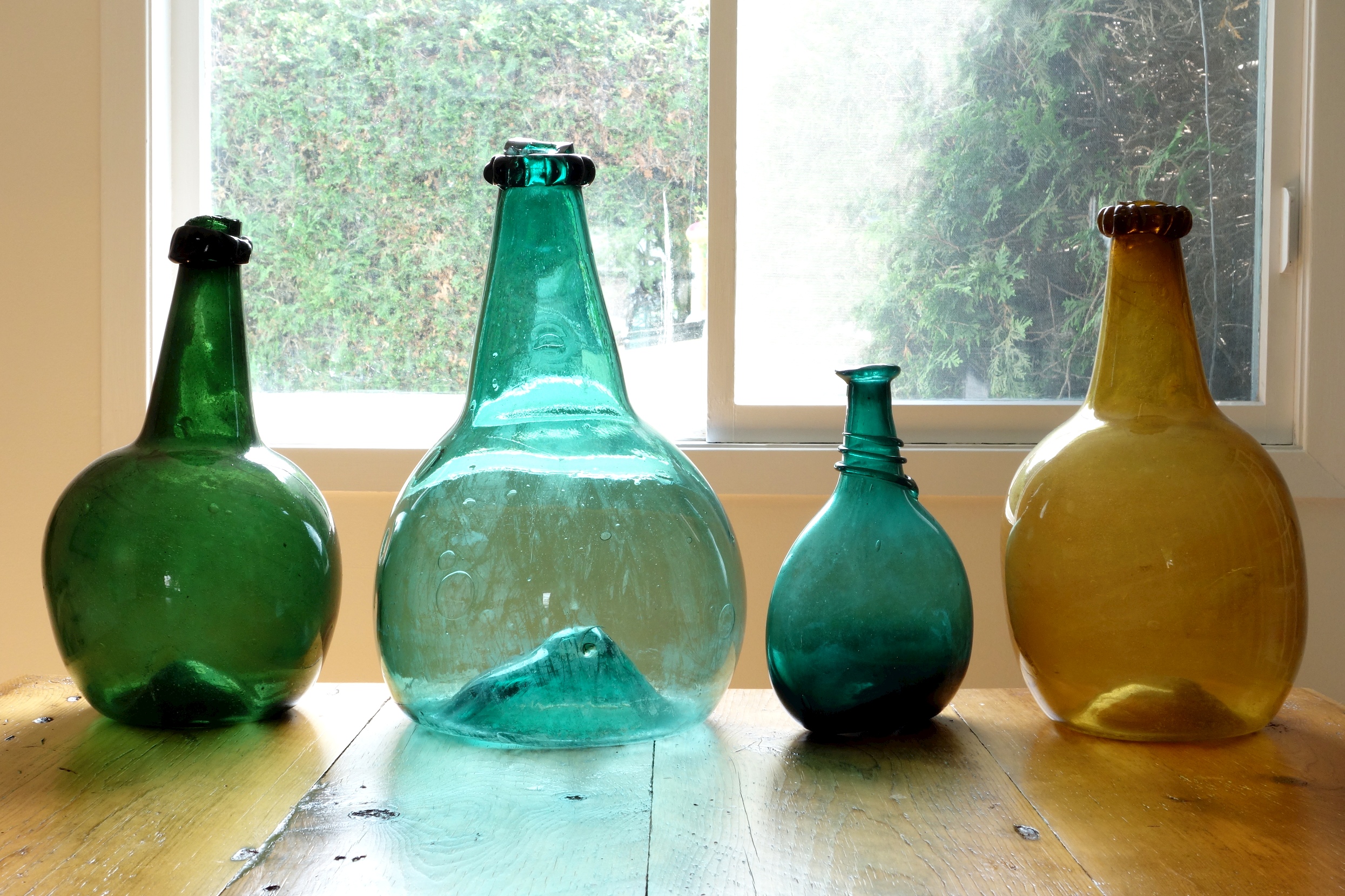
I’ve never met a category like Late Persian glass. Many people hate it. Many people think it’s all modern junk, made for tourists. Most people – in fact darn near everyone – seems to know almost nothing at all about it. So, due to a happy twist of fate in the summer of 2012 when I was offered what I believe was one of the largest intact collections of Late Persians (outside of the Middle East, at least), I jumped at it. I knew nothing about Late Persians – in fact – I knew nothing about Persia at all.
What I did know – and have come to enjoy even more – is that these are delightful pieces of hand-blown glass, with all of the uniqueness that affords. They come in a variety of rich and wonderful colours, and they come with lip finishes that you will not find anywhere else in the world. They are, in short, delightful.
Where do I find it? Well, the foundational element (just over 100 pieces) came from the collection of Marlena Fairbourne. Marlena was one of the first people (that I’m aware of) who found this fascinating and under-collected glass, and she spent much of the 1990s and 2000s putting together her collection from acquisitions around the world. My casual question in an email to Marlena (“So what IS late persian glass?”) turned into, well, this site, and since then, I’ve been looking all over the world for others. Ebay was a good early source, but the bottles have literally come from all over. I’ve purchased glass from Australia, England, France, Sweden, the Netherlands, India, the USA and of course from here in Canada. There may be a couple more countries, but those ones come quickly to mind. Remember that both wine and rose water were exported from Persian as early as the 1600s and by the trading companies of at least three different nations. Add on top of that the export of glass containers (rose water sprinklers, which seem to have made their way in some number to India, at least) in substantial quantities over 300 years as well, and there’s a lot of it out there, at least ostensibly!
Are there fakes? Absolutely! Even today, I buy new types of fakes to document them, and I get “caught out” buying what I believe are originals, only to learn when they come out of the box that they are 20th or 21st century bottles. It’s very much a learning curve. I’m sure my work will help others avoid some of the pitfalls – but I wouldn’t suggest collecting Late Persians unless you are comfortable buying a lot of fakes in with the originals.
I canvassed some of the major museums that studied glass or Islamic arts, but thus far at least, have found no one who is knowledgeable about this type of glass. In a way, it makes sense. “Late” Persian means “new” Persian – in comparison to Early and Mid-Persian. And really – who wants to study the new stuff when the older stuff is always so much sexier? It might be 17th century glass, but in a country and a culture that boasts of 7th century glass – which would you choose to focus on? And in a region with an estimated 10,000 untouched archaeological sites, dating back before recorded time – which ones do you think will be studied first?
So here we have them…the poor cousins, the youngest siblings, the late-to-the-dining-table Late Persian glass bottles. They may not be gilted, inlaid or wheel-cut like their older siblings, but they still have a story to tell. Hopefully, enough of it will wind up here to make it interesting for visitors.

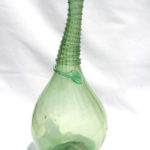
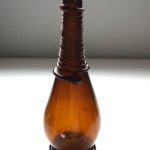
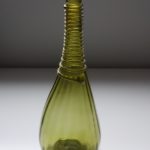
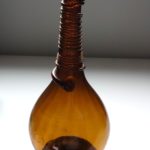
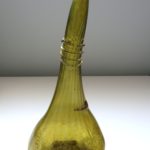
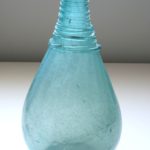
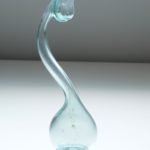
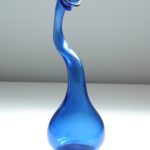
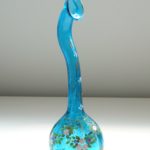
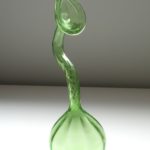
Owner of two of these
Hi, interesting site on this poorly known type of glass (in Europe at least). Great pictures! I’ve added your website in the “links” section of my blog on ancient bottles (in French). All the best, Thierry
Thank you for the kind words, Thierry! And I would suggest that this type of glass is poorly understood here in North America as well!! Thank you for the link. I had forgotten to include a links section on this site and should fix that omission – adding in your blog, of course! Merci! Phil
here’s the link to this blog: http://bouteillesanciennes.net/
I have a flask that I think is an antique Persian water flask saddle flask and need help identifying it. Thank you very much for all the help you might be able to give me!
Always happy to help. Forward me a couple photos and I’ll tell you what I can!
Cheers,
Phil
I have a beautiful dark amethyst Persian saddle flask that I believe to not be a fake. I would love to send you the photos so you can give me your input. Thank you so much for your time.
Thank you for your postings. I collect handmade European and American beverage bottles. Over the years I have acquired four bottles that fit into your category of Persian. I have the(1) ovoid tapered ringed necked “Saddle Flask”, (2)a large round serving bottle with a tall neck and Flower shaped lip, and (3&4) two case bottles , large size with the half post blown German style neck. All are lite green very thick glass, have heavy open cracked off pontils. I have not seen any evidence so far, that these bottles have been dug up or found along any of the sites or ship wrecks of the commercial European trade routes of the last two centuries. I have assumed they were made for local use and not for export containers.
Best
Richard
Thanks for the great note, Richard – I’d love to see images of your bottles. The only place I’m finding late Persia bottles that I would confidently say are export markets is in northern India. A number of the early rosewater sprinklers have been found there, a number of the double-gourd transport bottles as well. I have often wondered where the Guyana/Belize equivalent was for Dutch bottles – as early Dutch colonies, there are scads of early Dutch bottles being found in Guyana and Belize…is there a late Persian equivalent? I’d be fascinated to know!
A little over 25 yrs ago I purchased a collection of “Persian” bottles from the husband of a woman who collected them in Iran before the Shaw was overthrown. They lived there for many years. She and her husband brought her collection to the states before she died. He knew nothing about them. I was and am a bottle collector/dealer and I made him an offer to buy all I could get in my truck for one amount of money. I ended up with over 25 from that collection, plus I have added saddle flasks over the years. I use them as decoration in my living room. This year I am displaying some of them at my Bottle club show in Deland FL. this weekend. I know I probably have some modern “fakes” but so what, they are interesting to look at and the public has never seen a display like this anyway and I am not selling any. I have at least one that has never been seen by any collectors that I know about. I do shows all over the US and this is the first such display I am aware of.